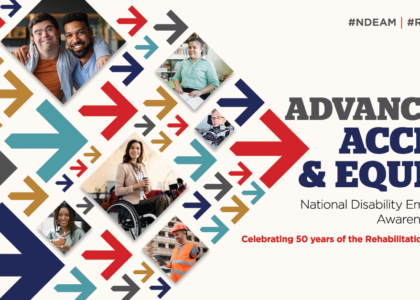In today’s society, the integration of individuals with disabilities into the workforce is considered a fundamental aspect of fostering inclusivity and equal opportunities. However, this journey towards integrated disability employment has been a long and evolving process. Over the years, society has witnessed significant advancements in attitudes, legislation, and practices that have helped shape the landscape of employment for people with disabilities. In this blog post, we will explore the historical milestones and key developments that have contributed to the progress of integrated disability employment.
Early Perspectives and Segregated Approaches:
Throughout history, attitudes towards disability varied widely, with many societies holding misconceptions and prejudices. People with disabilities were often seen as incapable or were deemed unfit for work. Consequently, they were excluded from mainstream employment and marginalized in institutions or homes.
However, pioneering efforts emerged in the 18th and 19th centuries as individuals and organizations began advocating for change. Philanthropic endeavors, such as sheltered workshops and charitable institutions, aimed to provide vocational training and employment opportunities for individuals with disabilities. Although well-intentioned, these early initiatives often reinforced segregation and perpetuated the idea of “charity” rather than genuine inclusion.
The Disability Rights Movement
The second half of the 20th century witnessed a paradigm shift in the perception of disability, fueled by the global Disability Rights Movement. The movement emphasized the rights, dignity, and capabilities of individuals with disabilities and demanded equal opportunities in all aspects of life, including employment.
In the United States, the Rehabilitation Act of 1973 played a pivotal role. Section 504 of the Act prohibited discrimination on the basis of disability in programs receiving federal funding. This landmark legislation paved the way for greater accessibility and set the stage for subsequent developments such as the Americans with Disabilities Act (ADA) of 1990.
The Americans with Disabilities Act (ADA)
The ADA represents a major turning point in the history of integrated disability employment. It broadened the definition of disability and mandated equal access to employment, public services, and accommodations. Employers were required to provide reasonable accommodations to enable individuals with disabilities to perform essential job functions.
The ADA’s impact was far-reaching, not only in the United States but also globally, as it inspired similar legislation and initiatives worldwide. Through the ADA, workplace discrimination became increasingly unacceptable, and employers were compelled to actively seek and hire qualified individuals with disabilities.
Advancements in Workplace Accommodations & Technology
As technology advanced, it opened up new avenues for inclusive employment. Assistive technologies, such as screen readers, text-to-speech software, and ergonomic tools, revolutionized the workplace for individuals with disabilities. These tools provided greater independence and leveled the playing field, enabling individuals to thrive in various roles and industries.
Moreover, workplace accommodations evolved to meet the diverse needs of employees with disabilities. Employers began recognizing the value of tailored accommodations, such as flexible work hours, accessible workspaces, and communication support, ensuring individuals could contribute effectively.
Corporate Initiatives and Social Impact
In recent years, the corporate sector has increasingly embraced diversity and inclusion, recognizing that employing individuals with disabilities is not only a social responsibility but also a smart business move. Many leading companies have implemented disability inclusion initiatives, prioritizing diverse hiring practices and fostering inclusive workplace cultures.
These initiatives go beyond compliance with legal requirements, focusing on creating accessible environments, providing ongoing training, and fostering a sense of belonging for all employees. As a result, individuals with disabilities are gaining greater visibility and representation in the workforce.
The history of integrated disability employment has been marked by significant progress, transforming societal attitudes and fostering equal opportunities for individuals with disabilities. From early segregated approaches to the passage of landmark legislation and the integration of assistive technologies





